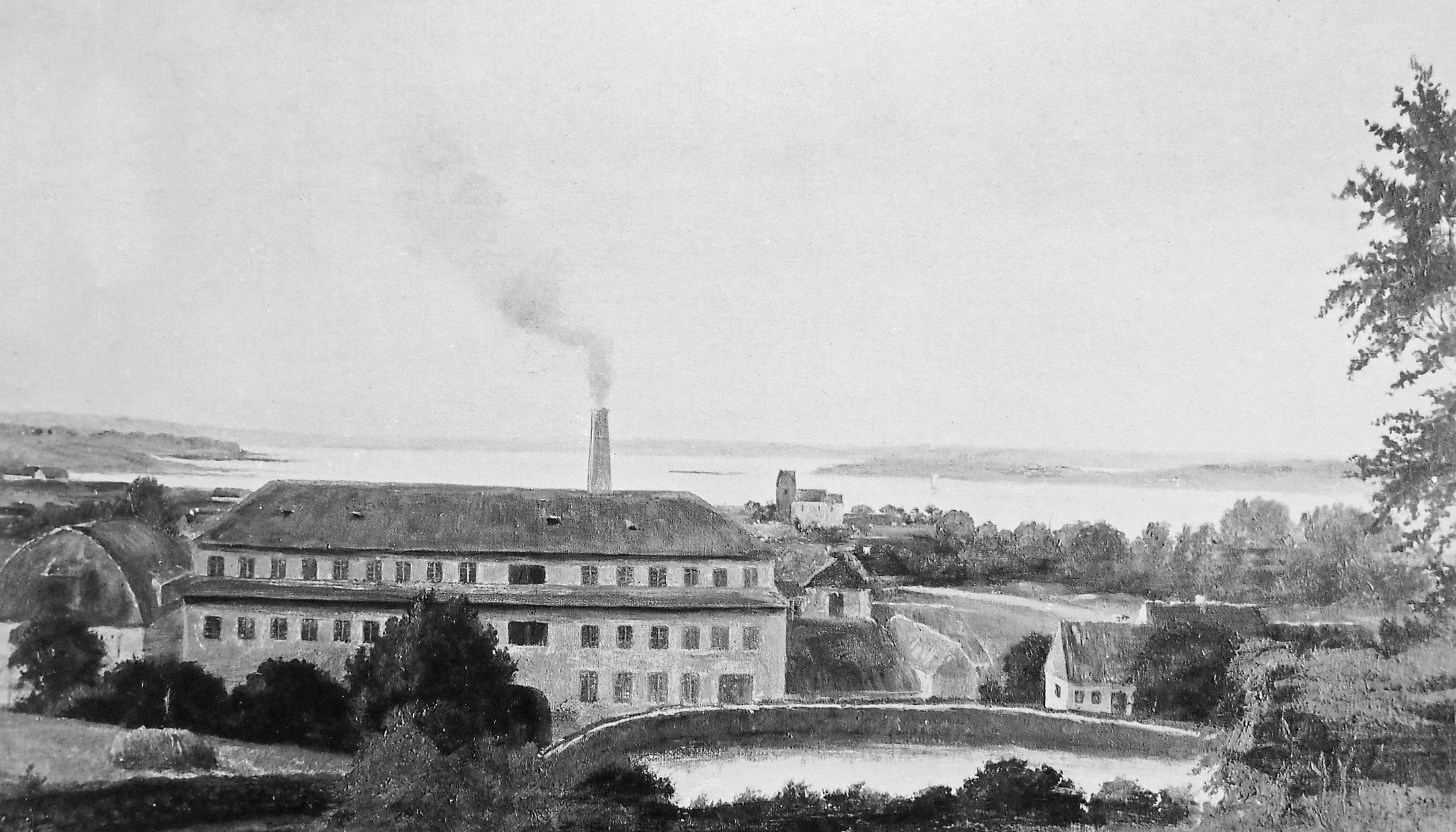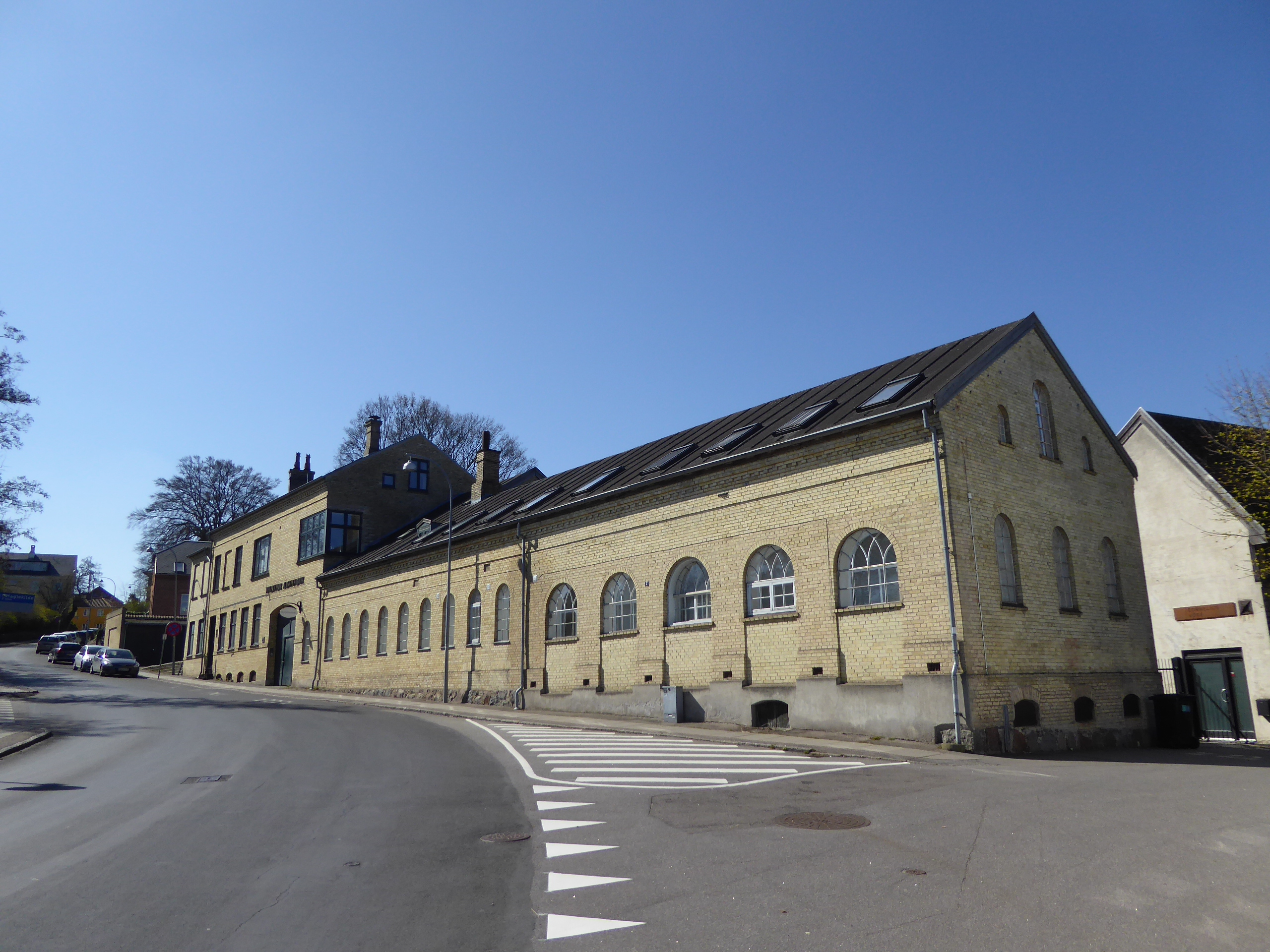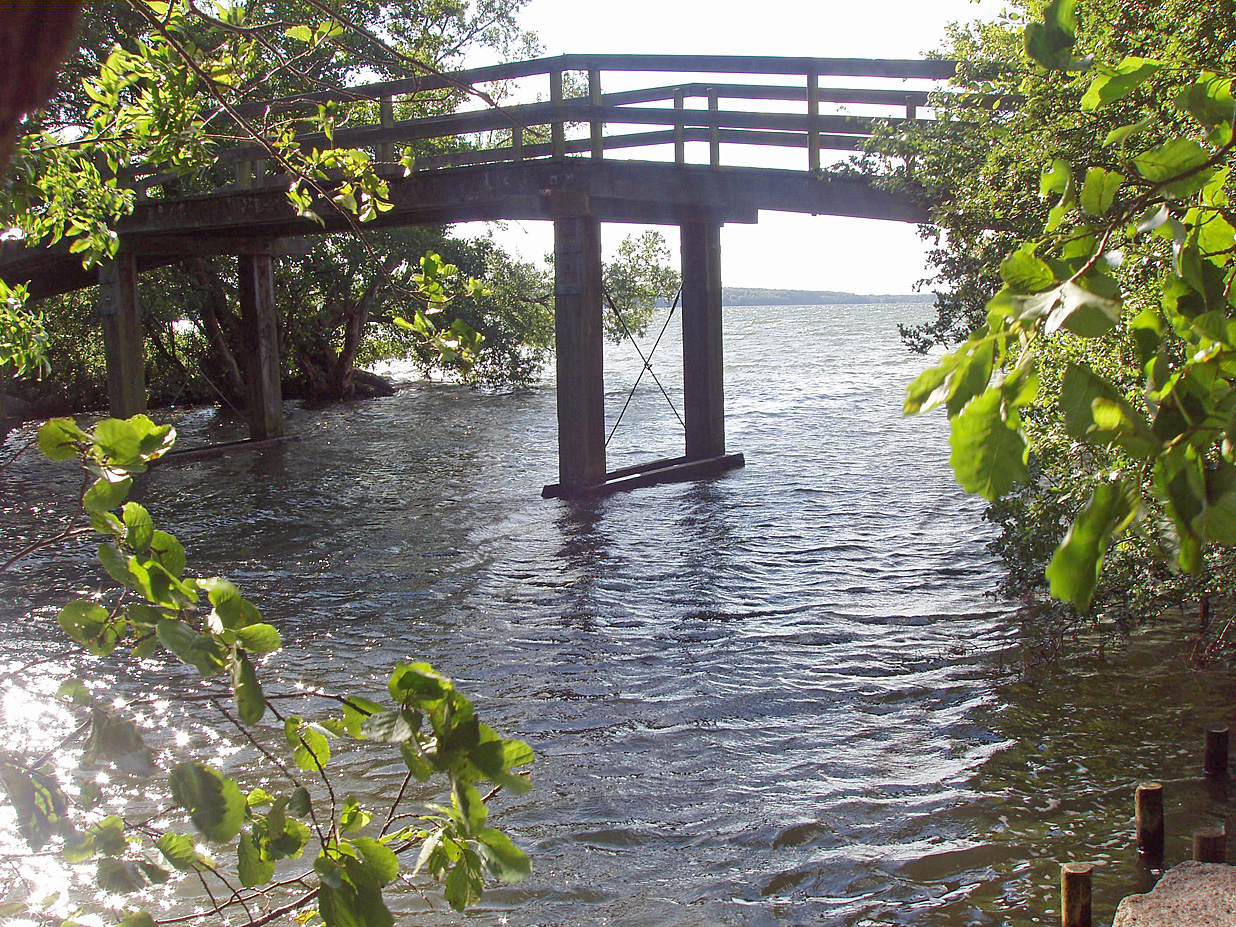|
Maglekilde
Maglekilde is the most powerful of several natural springs in Roskilde, Denmark. It formerly issued water at a rate of some 90,000 litres per hour but has now dropped to 15,000 litres per hour. A wellhouse was built over the spring in 1927. The building was listed in the Danish registry of protected buildings and places in 1979. History Early history Extensive deposits of travertine from Maglekilde were mined and used as a building material before bricks became readily available. Several churches in the Roskilde area were built in travertine from the spring in the 11th and 12th centuries. This activity resulted in the formation of a pond which was used as a mill pond. The watermill at the site was called Maglekilde Watermill (''Maglekilde Mølle''). The water from the spring also powered five other watermills on its way to Roskilde Fjord: Vandhulsmølle, Sankt Mortens Mølle, Kapelsmøllen, Sankt Clara Mølle and Strandmøllen. Maglekilde Watermill is first mentioned by name in 12 ... [...More Info...] [...Related Items...] OR: [Wikipedia] [Google] [Baidu] |
Maglekilde Træsnit (c
Maglekilde is the most powerful of several natural springs in Roskilde, Denmark. It formerly issued water at a rate of some 90,000 litres per hour but has now dropped to 15,000 litres per hour. A wellhouse was built over the spring in 1927. The building was listed in the Danish registry of protected buildings and places in 1979. History Early history Extensive deposits of travertine from Maglekilde were mined and used as a building material before bricks became readily available. Several churches in the Roskilde area were built in travertine from the spring in the 11th and 12th centuries. This activity resulted in the formation of a pond which was used as a mill pond. The watermill at the site was called Maglekilde Watermill (''Maglekilde Mølle''). The water from the spring also powered five other watermills on its way to Roskilde Fjord: Vandhulsmølle, Sankt Mortens Mølle, Kapelsmøllen, Sankt Clara Mølle and Strandmøllen. Maglekilde Watermill is first mentioned by name in 12 ... [...More Info...] [...Related Items...] OR: [Wikipedia] [Google] [Baidu] |
Maglekilde
Maglekilde is the most powerful of several natural springs in Roskilde, Denmark. It formerly issued water at a rate of some 90,000 litres per hour but has now dropped to 15,000 litres per hour. A wellhouse was built over the spring in 1927. The building was listed in the Danish registry of protected buildings and places in 1979. History Early history Extensive deposits of travertine from Maglekilde were mined and used as a building material before bricks became readily available. Several churches in the Roskilde area were built in travertine from the spring in the 11th and 12th centuries. This activity resulted in the formation of a pond which was used as a mill pond. The watermill at the site was called Maglekilde Watermill (''Maglekilde Mølle''). The water from the spring also powered five other watermills on its way to Roskilde Fjord: Vandhulsmølle, Sankt Mortens Mølle, Kapelsmøllen, Sankt Clara Mølle and Strandmøllen. Maglekilde Watermill is first mentioned by name in 12 ... [...More Info...] [...Related Items...] OR: [Wikipedia] [Google] [Baidu] |
Maglekilde Vandkuranstalt
Maglekilde is the most powerful of several natural springs in Roskilde, Denmark. It formerly issued water at a rate of some 90,000 litres per hour but has now dropped to 15,000 litres per hour. A wellhouse was built over the spring in 1927. The building was listed in the Danish registry of protected buildings and places in 1979. History Early history Extensive deposits of travertine from Maglekilde were mined and used as a building material before bricks became readily available. Several churches in the Roskilde area were built in travertine from the spring in the 11th and 12th centuries. This activity resulted in the formation of a pond which was used as a mill pond. The watermill at the site was called Maglekilde Watermill (''Maglekilde Mølle''). The water from the spring also powered five other watermills on its way to Roskilde Fjord: Vandhulsmølle, Sankt Mortens Mølle, Kapelsmøllen, Sankt Clara Mølle and Strandmøllen. Maglekilde Watermill is first mentioned by name in 12 ... [...More Info...] [...Related Items...] OR: [Wikipedia] [Google] [Baidu] |
Maglekilde Efter 1820
Maglekilde is the most powerful of several natural springs in Roskilde, Denmark. It formerly issued water at a rate of some 90,000 litres per hour but has now dropped to 15,000 litres per hour. A wellhouse was built over the spring in 1927. The building was listed in the Danish registry of protected buildings and places in 1979. History Early history Extensive deposits of travertine from Maglekilde were mined and used as a building material before bricks became readily available. Several churches in the Roskilde area were built in travertine from the spring in the 11th and 12th centuries. This activity resulted in the formation of a pond which was used as a mill pond. The watermill at the site was called Maglekilde Watermill (''Maglekilde Mølle''). The water from the spring also powered five other watermills on its way to Roskilde Fjord: Vandhulsmølle, Sankt Mortens Mølle, Kapelsmøllen, Sankt Clara Mølle and Strandmøllen. Maglekilde Watermill is first mentioned by name in 12 ... [...More Info...] [...Related Items...] OR: [Wikipedia] [Google] [Baidu] |
Maglekilde Machine Factory
Maglekilde Machine Factory (Danish: Maglekilde Maskinfabrik) was a machine factory founded in 1865 in Roskilde, Denmark. A continuous cream-milk separator marketed by the company in 1878 played a key role in the growth of the Danish dairy industry and increased export of butter in the late 19th century. History Maglekilde Machine Factory was founded as O.Petersen & Co. Jernstøberi, Maskinfabrik, Værktøjsfabrik og Træskæreri by master smith Ole Petersen in Ruds Vedby in 1865. In 1865, he purchased the former Maglekilde Spa Complex in Roskilde. The operations were initially powered by water from Maglekilde but it was soon supplemented by steam power. A large new factory was completed on the other side of the street in 1877. The machine factory specialized in machinery. In 1878, it launched the sale of a new continuous centrifugal cream-milk separator. It revolutionalized the Danish dairy industry, paving the way for the opening of many new industrial dairies and a rapid ... [...More Info...] [...Related Items...] OR: [Wikipedia] [Google] [Baidu] |
Listed Buildings In Roskilde Municipality
This list of listed buildings in Roskilde Municipality lists listed buildings in Roskilde Municipality, Denmark. List Veksø, Roskilde Municipality, 3670 Veksø Sjælland Roskilde, 4000 Roskilde Jyllinge, 4040 Jyllinge Viby, Roskilde Municipality, 4130 Viby Sjælland See also * List of churches in Roskilde Municipality References External links Danish Agency of Culture RefListed buildings in Roskilde and Lejre(in Danish) Skivernes kunstnere {{DEFAULTSORT:Listed buildings in Roskilde Municipality Listed buildings and structures in Roskilde Municipality, Lists of listed buildings in Denmark, Roskilde ... [...More Info...] [...Related Items...] OR: [Wikipedia] [Google] [Baidu] |
Roskilde
Roskilde ( , ) is a city west of Copenhagen on the Danish island of Zealand. With a population of 51,916 (), the city is a business and educational centre for the region and the 10th largest city in Denmark. It is governed by the administrative council of Roskilde Municipality. Roskilde has a long history, dating from the pre-Christian Viking Age. Its UNESCO-listed Gothic cathedral, now housing 39 tombs of the Danish monarchs, was completed in 1275, becoming a focus of religious influence until the Reformation. With the development of the rail network in the 19th century, Roskilde became an important hub for traffic with Copenhagen, and by the end of the century, there were tobacco factories, iron foundries and machine shops. Among the largest private sector employers today are the IT firm BEC (Bankernes EDB Central) and seed company DLF. The Risø research facility is also becoming a major employer, extending interest in sustainable energy to the clean technology sphere. The ... [...More Info...] [...Related Items...] OR: [Wikipedia] [Google] [Baidu] |
Mølleåen
Mølleåen, also Mølleå, sometimes translated as the Millstream, is a small river in North Zealand, Denmark, which runs from the west of Bastrup Sø near Lynge to the Øresund between Taarbæk and Skodsborg. The valley contains several country houses and a series of mills which initiated Denmark's industrial development. Course The source of the river is Hettings Mose between the lakes of Buresø and Bastrup Sø. Over the next , the river drops until it reaches the sea. After Bastrup Sø, the river runs through a swampy area to Farum Sø. Thereafter, for a period it becomes "Fiskebæk Å", passing under the Hillerød motorenway (E16) and Frederiksborgsvej before reaching Denmark's deepest lake, Furesø, with a depth of . After passing through Frederiksdal Storskov, the river runs under Nybrovej until it meets the lake of Lyngby Sø. Between here and the sea, the river falls a further , providing excellent opportunities for water mills. The river winds through the gardens ... [...More Info...] [...Related Items...] OR: [Wikipedia] [Google] [Baidu] |
Hamburg
(male), (female) en, Hamburger(s), Hamburgian(s) , timezone1 = Central (CET) , utc_offset1 = +1 , timezone1_DST = Central (CEST) , utc_offset1_DST = +2 , postal_code_type = Postal code(s) , postal_code = 20001–21149, 22001–22769 , area_code_type = Area code(s) , area_code = 040 , registration_plate = , blank_name_sec1 = GRP (nominal) , blank_info_sec1 = €123 billion (2019) , blank1_name_sec1 = GRP per capita , blank1_info_sec1 = €67,000 (2019) , blank1_name_sec2 = HDI (2018) , blank1_info_sec2 = 0.976 · 1st of 16 , iso_code = DE-HH , blank_name_sec2 = NUTS Region , blank_info_sec2 = DE6 , website = , footnotes ... [...More Info...] [...Related Items...] OR: [Wikipedia] [Google] [Baidu] |
March Revolution (Denmark)
The March Revolution in Denmark refers to the events of 1848 that ultimately led to the introduction of Danish constitutional monarchy and the Constitution of Denmark. Background The February and March Revolutions of 1848 were a series of violent events that took place in several European countries (including France and Germany) and marked the emergence of steadily increasing support for democratic reform among the civic population in those countries. Denmark, which had long had a movement for constitutional reform, was affected by the fallout of these revolutions. King Frederick VII (reigned 1848-63) was 39 years old at his coronation of 20 January 1848. As a prince he had had a somewhat unstable existence including two failed marriages, had no notable skills, and had engaged very little with state-related duties. This, and his lack of desire to shoulder the heavy work and responsibilities of an absolute monarch, meant that he was already open to the thought of a constitutional ... [...More Info...] [...Related Items...] OR: [Wikipedia] [Google] [Baidu] |
Neptune (mythology)
Neptune ( la, Neptūnus ) is the god of freshwater and the sea in Roman religion. He is the counterpart of the Greek god Poseidon.''Larousse Desk Reference Encyclopedia'', The Book People, Haydock, 1995, p. 215. In the Greek tradition, he is a brother of Jupiter and Pluto; the brothers preside over the realms of heaven, the earthly world (including the underworld), and the seas. Salacia is his wife. Depictions of Neptune in Roman mosaics, especially those in North Africa, were influenced by Hellenistic conventions. He was likely associated with freshwater springs before the sea. Like Poseidon, he was also worshipped by the Romans as a god of horses, as ''Neptunus equestris'' (a patron of horse-racing). Worship The theology of Neptune is limited by his close identification with the Greek god Poseidon, one of many members of the Greek pantheon whose theology was later tied to a Roman deity. The ''lectisternium'' of 399 BC indicated that the Greek figures of Poseidon, Art ... [...More Info...] [...Related Items...] OR: [Wikipedia] [Google] [Baidu] |
Hans Conrad Stilling
Hans may refer to: __NOTOC__ People * Hans (name), a masculine given name * Hans Raj Hans, Indian singer and politician ** Navraj Hans, Indian singer, actor, entrepreneur, cricket player and performer, son of Hans Raj Hans ** Yuvraj Hans, Punjabi actor and singer, son of Hans Raj Hans * Hans clan, a tribal clan in Punjab, Pakistan Places * Hans, Marne, a commune in France * Hans Island, administrated by Greenland and Canada Arts and entertainment * ''Hans'' (film) a 2006 Italian film directed by Louis Nero * Hans (Frozen), the main antagonist of the 2013 Disney animated film ''Frozen'' * ''Hans'' (magazine), an Indian Hindi literary monthly * ''Hans'', a comic book drawn by Grzegorz Rosiński and later by Zbigniew Kasprzak Other uses * Clever Hans, the "wonder horse" * ''The Hans India'', an English language newspaper in India * HANS device, a racing car safety device *Hans, the ISO 15924 code for Simplified Chinese script See also *Han (other) *Hans im Glück, a Germa ... [...More Info...] [...Related Items...] OR: [Wikipedia] [Google] [Baidu] |





